21 Stunning College Stadiums That Rival the Pros
In today’s high-stakes world of college athletics, stadiums have evolved far beyond simple game-day venues—they’re bold expressions of school pride, cutting-edge design, and next-level fan experiences. No longer just stepping stones to the pros, many college stadiums now rival (and in some cases outshine) their professional counterparts in scale, innovation, and atmosphere. These arenas are architectural powerhouses and cultural landmarks that pulse with energy on game day and stand as year-round icons of school spirit. We’ve expanded our list to 21 jaw-dropping college stadiums that showcase just how far the NCAA has come. From high-tech features to jaw-dropping views, these stadiums don’t just host games—they redefine them. Whether you're a diehard fan or just a lover of stunning design, these collegiate cathedrals prove one thing loud and clear: the college game isn’t just keeping up—it’s setting the pace.
1. Michigan Stadium (University of Michigan) – Ann Arbor, Michigan
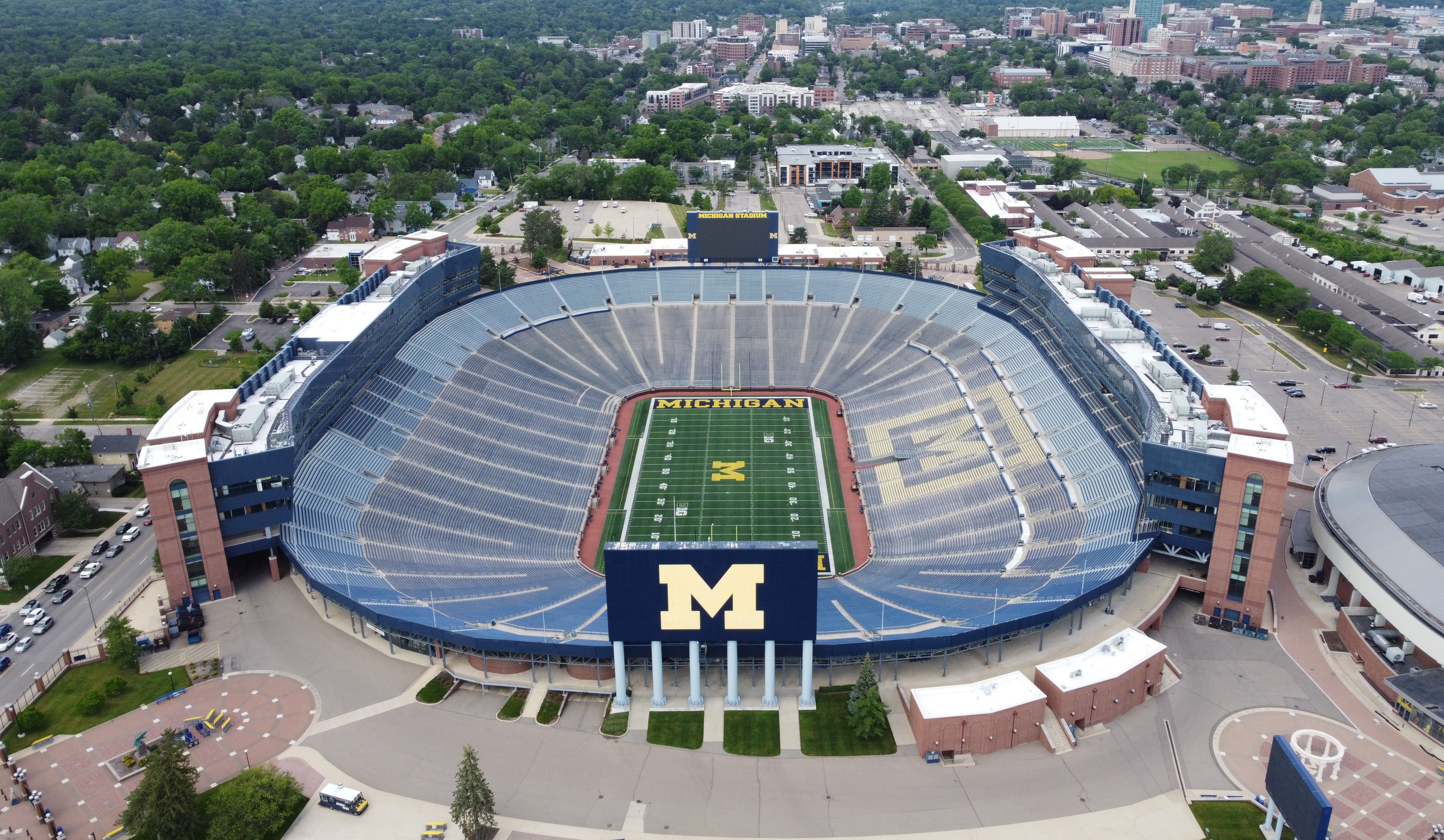
Nicknamed “The Big House,” Michigan Stadium isn’t just a monument to college football—it’s a cathedral of sport. With a jaw-dropping capacity of over 107,000, it holds the title of the largest stadium in the Western Hemisphere and the third largest in the world. But it’s not just size that sets it apart. Decades of evolution have turned this legendary venue into a fusion of historic tradition and cutting-edge innovation. Recent renovations have brought luxury suites, modernized press boxes, and massive high-definition video boards that deliver crystal-clear replays to every seat. On game days, the stadium becomes a sea of maize and blue, echoing with the roar of the Wolverines faithful. From the pregame band performance to the iconic “Go Blue” banner, every moment feels monumental. Whether you’re a student, alum, or visiting fan, stepping into The Big House feels like entering hallowed ground—a place where history is made every fall Saturday.
2. Kyle Field (Texas A&M University) – College Station, Texas
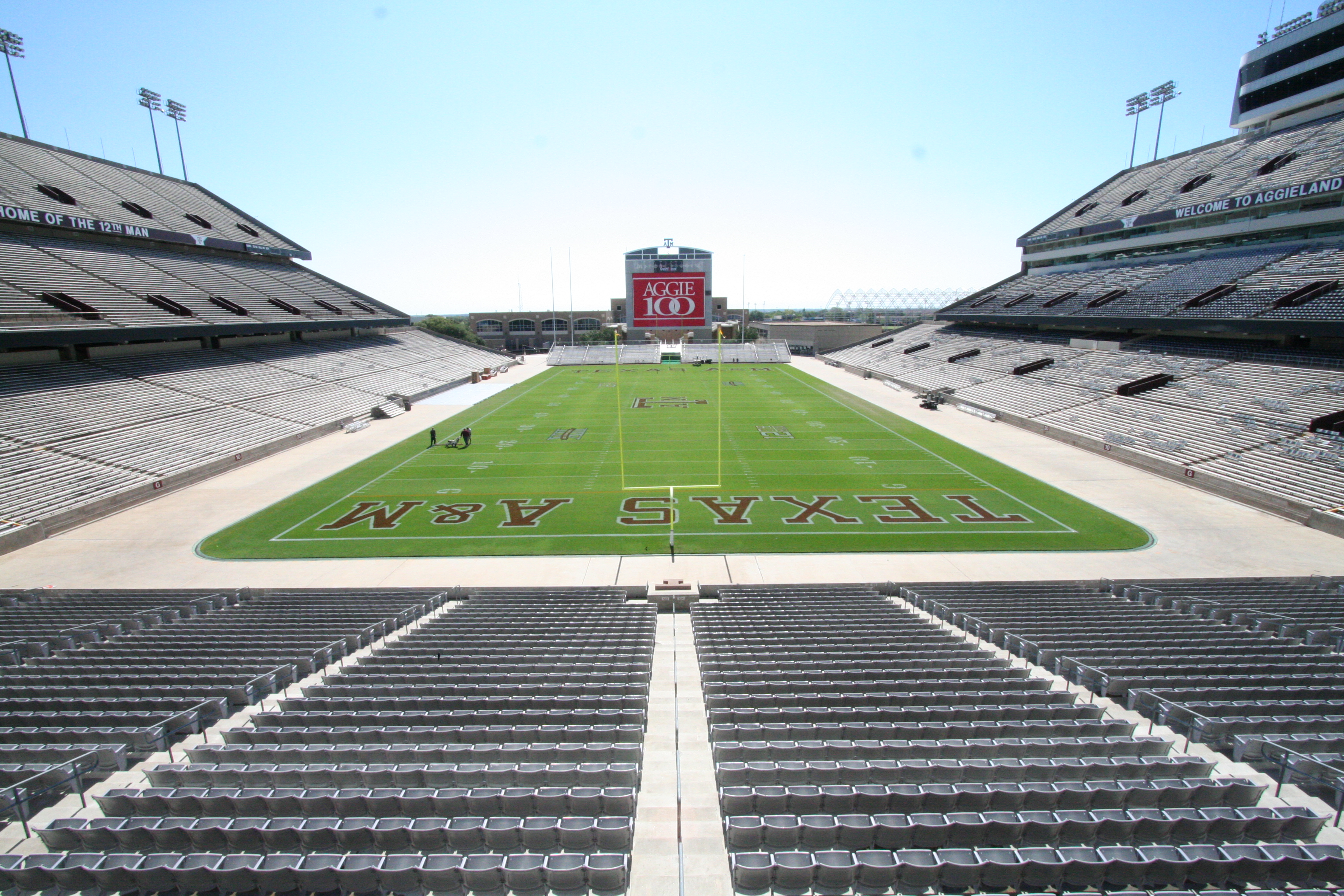
In Texas, they don’t just build stadiums—they build experiences. Kyle Field, affectionately known as “Home of the 12th Man,” stands as one of the grandest arenas in college football. Following a massive $485 million renovation, it now boasts a seating capacity of over 102,000, making it one of the largest and most advanced stadiums in the nation. But this isn’t just about numbers. The stadium’s design includes a towering south end zone with luxury suites, a three-tiered seating arrangement for optimal views, and enormous LED video boards that rival those in the NFL. Tech upgrades include distributed Wi-Fi, a dynamic sound system, and even cooling zones for fans during the sweltering Texas heat. But what truly sets Kyle Field apart is the energy. When the Aggies take the field and the crowd sways to the War Hymn, the entire stadium feels alive. The tradition of the 12th Man—where students stand in solidarity throughout the game—creates an atmosphere that’s part college pride, part professional-caliber spectacle.
3. Autzen Stadium (University of Oregon) – Eugene, Oregon
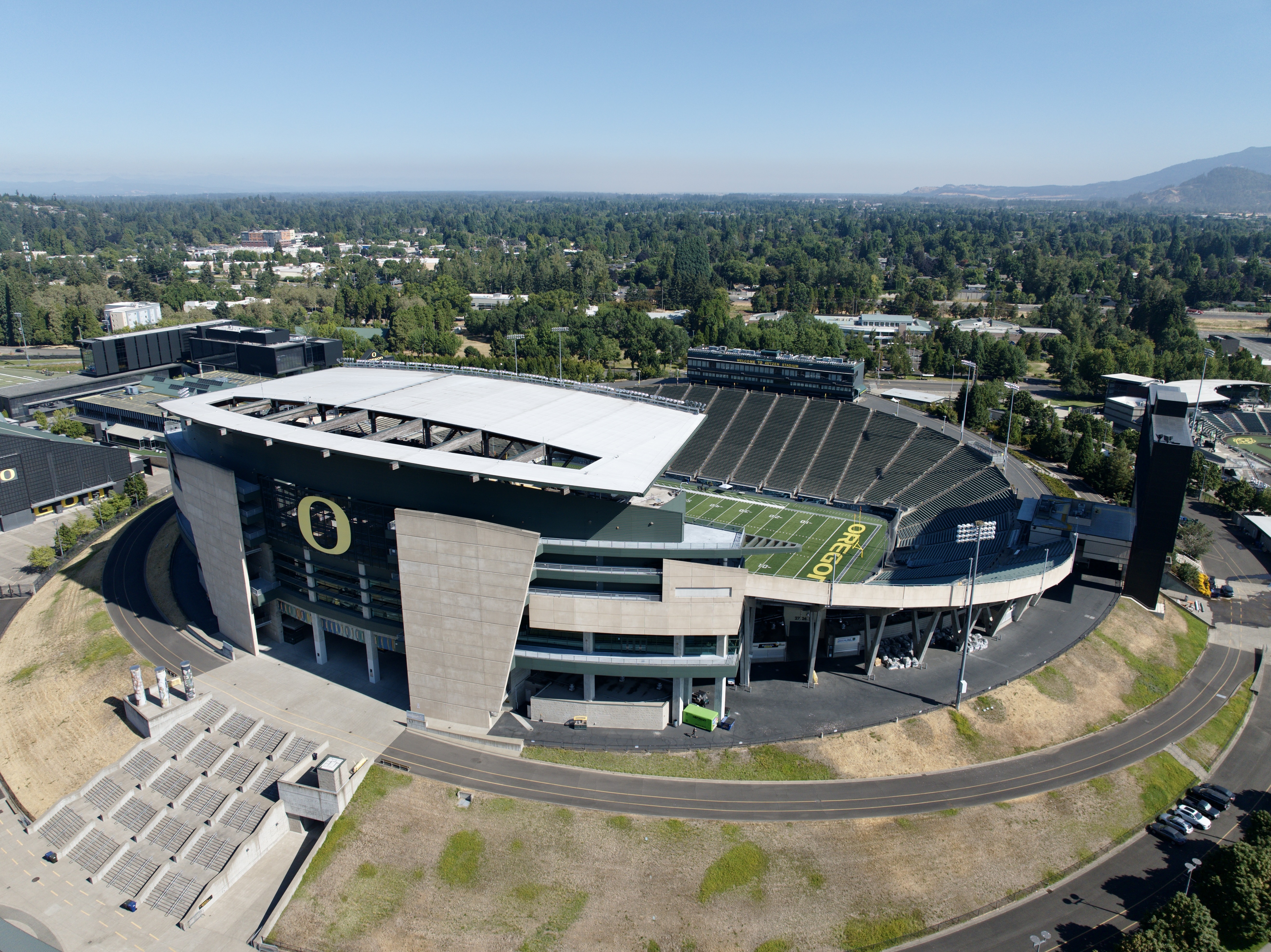
Autzen Stadium may not be the biggest, but it’s undoubtedly one of the most electric environments in all of college football. With a capacity of just under 55,000, it punches well above its weight class thanks to a hyper-engaged fan base and one of the loudest atmospheres per capita in sports. Backed by Nike and billionaire alum Phil Knight, Oregon has transformed this stadium into a futuristic fortress. Sleek design touches, bold architectural lines, and tech-integrated features echo the innovation found across the university’s campus. Inside, fans are treated to immersive sound, massive HD video boards, and high-tech amenities typically found in pro venues. The stadium’s compact layout keeps fans close to the action, creating an in-your-face energy that opposing teams dread. Add in the Ducks’ fast-paced, high-flying style of play, and Autzen becomes a cauldron of noise and spectacle—a tech-forward, adrenaline-pumping home field that rivals any Sunday stadium.
4. Beaver Stadium (Penn State University) – State College, Pennsylvania
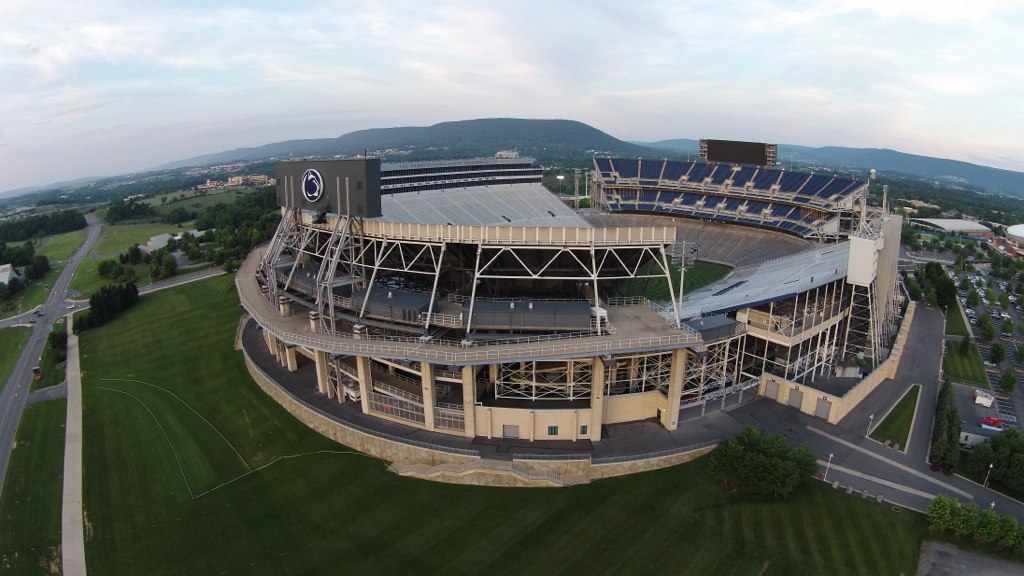
Beaver Stadium is more than a football venue—it’s a force of nature. With a seating capacity of over 106,000, it’s one of the largest stadiums in the world and an undisputed giant in college football. But beyond its sheer size lies a tradition-rich venue that transforms into one of the most awe-inspiring scenes in sports during a “White Out” game. Imagine a blinding sea of white-clad fans shaking the ground beneath your feet—it’s the kind of experience that sticks with players and spectators for life. Despite its traditional roots, Beaver Stadium has evolved with the times. Upgrades include high-speed Wi-Fi, enhanced concessions, expanded restrooms, and video boards that bring modern flair to its old-school charm. Plans for continued modernization reflect the school’s commitment to making it not just the biggest, but one of the best. Whether it’s a Big Ten showdown or a Saturday night clash under the lights, Beaver Stadium feels like a professional battlefield wrapped in college pageantry.
5. Husky Stadium (University of Washington) – Seattle, Washington
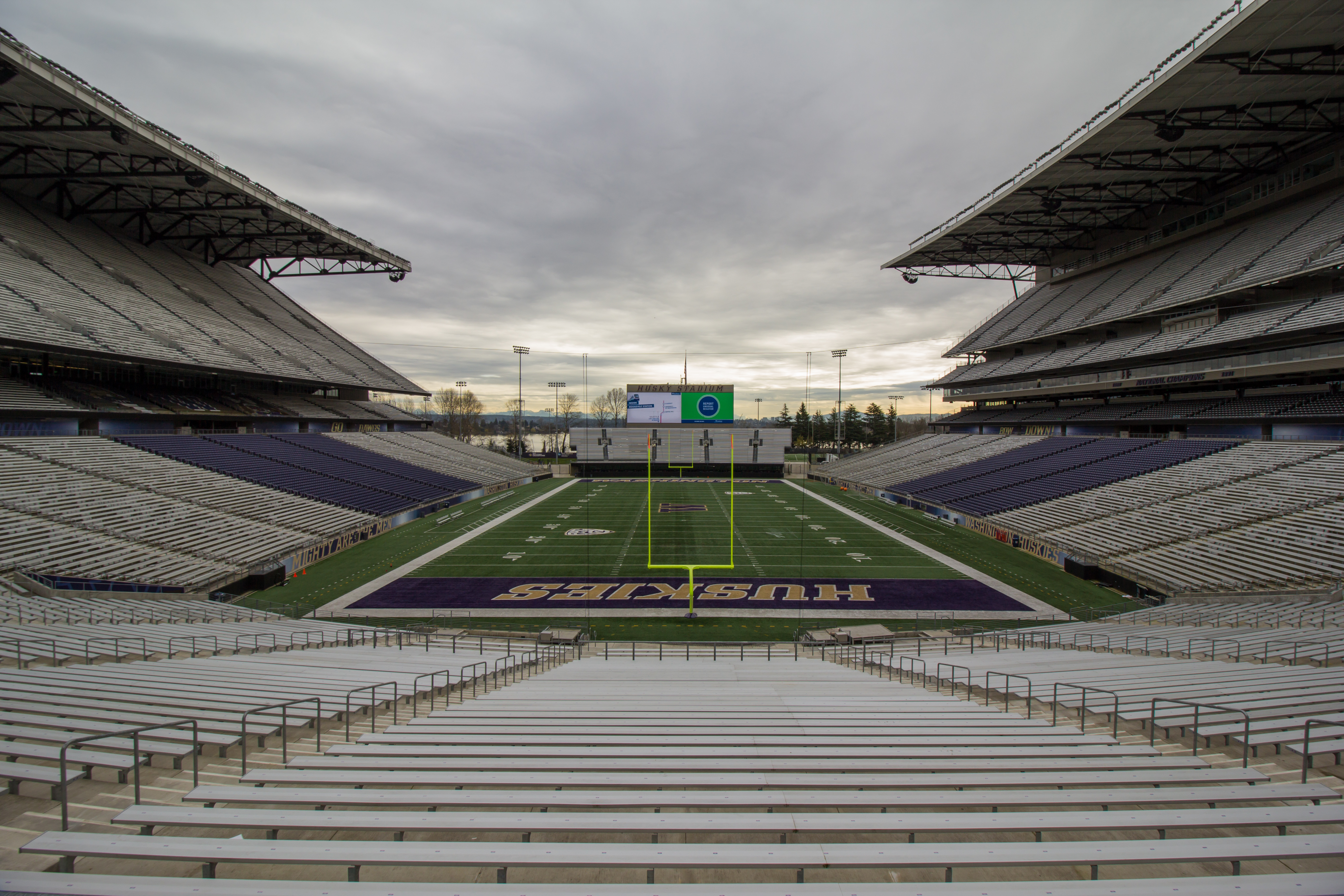
Perched on the shores of Lake Washington with the Cascade Mountains as its backdrop, Husky Stadium might just have the most breathtaking setting in college football. It’s where the grandeur of nature meets the sophistication of modern design. With a capacity of over 70,000, this stadium has long been known for its crowd noise—its iconic cantilevered roofs trap and amplify sound, creating a sonic boom effect that can rattle even the most seasoned opponents. A recent $280 million renovation brought the venue into the 21st century, adding premium club seating, luxury boxes, state-of-the-art video boards, and upgraded concessions. High-speed internet and cutting-edge tech enhance the fan experience, while the stadium's open design allows fans to gaze out at the lake between plays. Diehard fans often arrive by boat, docking in the lake’s “sailgating” zone before walking up to the stadium—creating one of the most unique pregame experiences in all of football. Husky Stadium is a rare blend of natural wonder and professional-grade sophistication.
6. Bryant-Denny Stadium (University of Alabama) – Tuscaloosa, Alabama
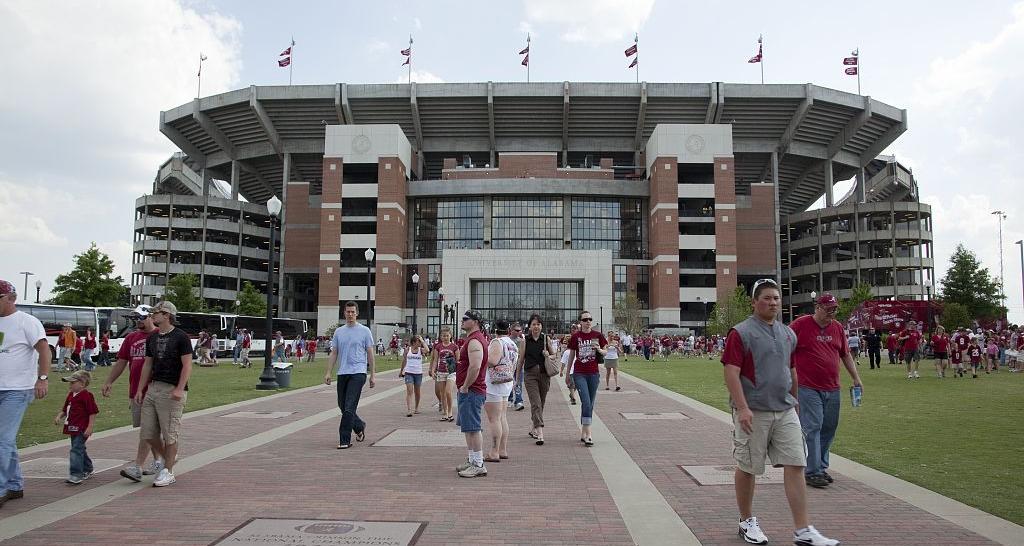
Bryant-Denny Stadium is a fortress of football greatness, befitting the dynasty it houses. Home to the Alabama Crimson Tide, it embodies the dominance of one of the most successful programs in sports history. With a capacity of over 100,000, the stadium ranks among the largest in the country and delivers an experience on par with the NFL’s most elite venues. A $107 million renovation added massive LED video boards, an expansive Walk of Champions entrance, upgraded concessions, enhanced Wi-Fi, and new premium seating options—including field-level suites and club lounges. But the true heartbeat of Bryant-Denny is the Alabama fanbase. From the “Rammer Jammer” chant to the marching band’s stirring pregame routine, game day here feels like a national holiday. The stadium’s sheer size and electric atmosphere can rattle opponents before the first snap. When Nick Saban’s squad hits the field, the energy shifts—the venue becomes a pressure cooker of championship expectations and Southern football tradition. Simply put, Bryant-Denny is where college football goes pro.
7. Notre Dame Stadium (University of Notre Dame) – South Bend, Indiana
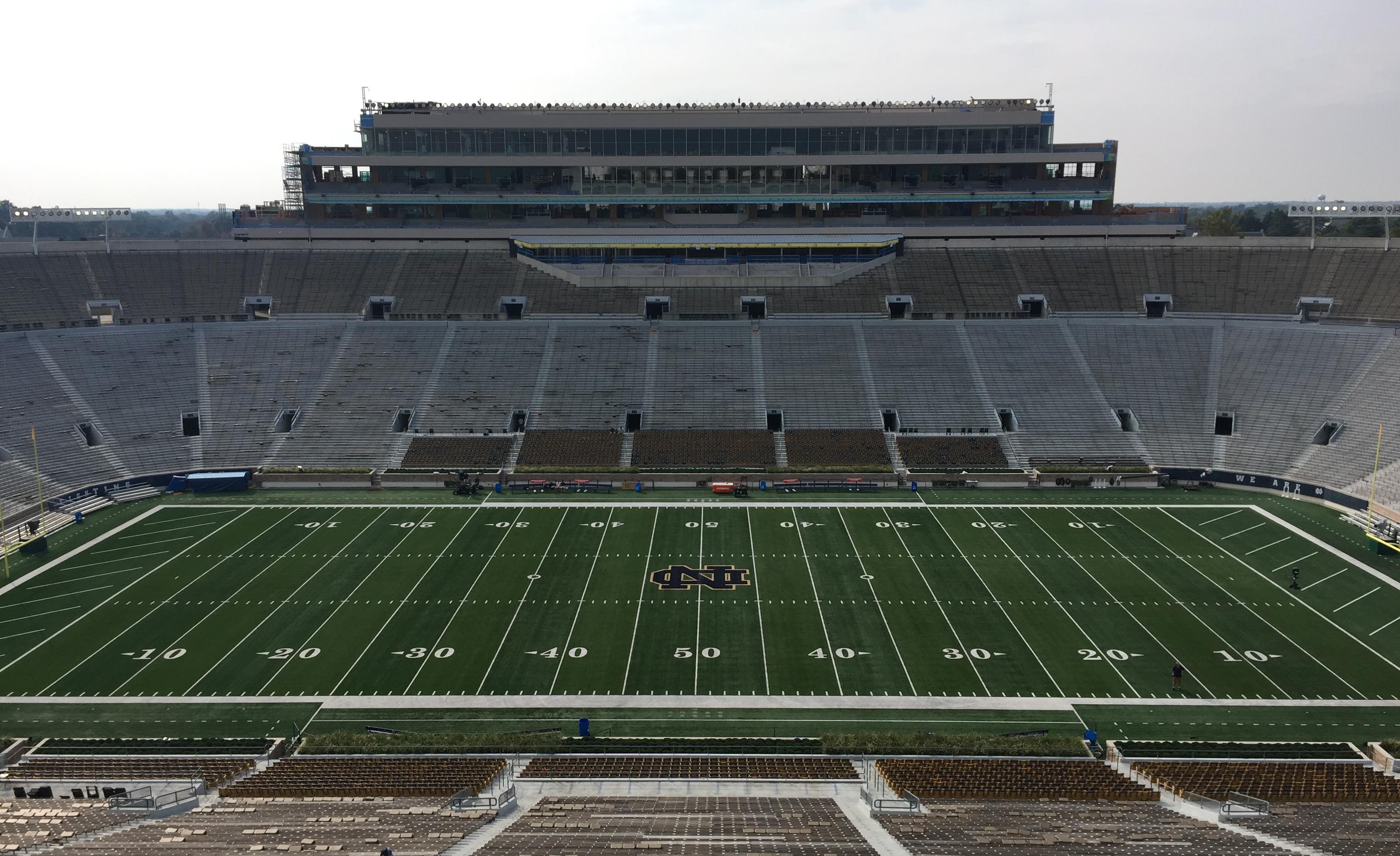
Known as “The House That Rockne Built,” Notre Dame Stadium is steeped in college football mythology, but it’s not resting on history alone. A sweeping $400 million renovation known as the Campus Crossroads project redefined the stadium experience without sacrificing its storied soul. The classic brickwork, sweeping arches, and gold accents remain—but inside, fans are now treated to enhanced seating, state-of-the-art video boards, and premium club levels that rival pro venues. Beyond football, the stadium now connects to academic and student spaces, turning it into a hub of activity year-round. The high-tech upgrades include a fully connected mobile experience, interactive apps, and expanded Wi-Fi—giving fans both tradition and tech in one iconic package. On Saturdays, the echo of the “Victory March” blends with modern spectacle, reminding visitors that Notre Dame isn’t just preserving a legacy—it’s building a future worthy of it.
8. Memorial Stadium (University of Nebraska) – Lincoln, Nebraska
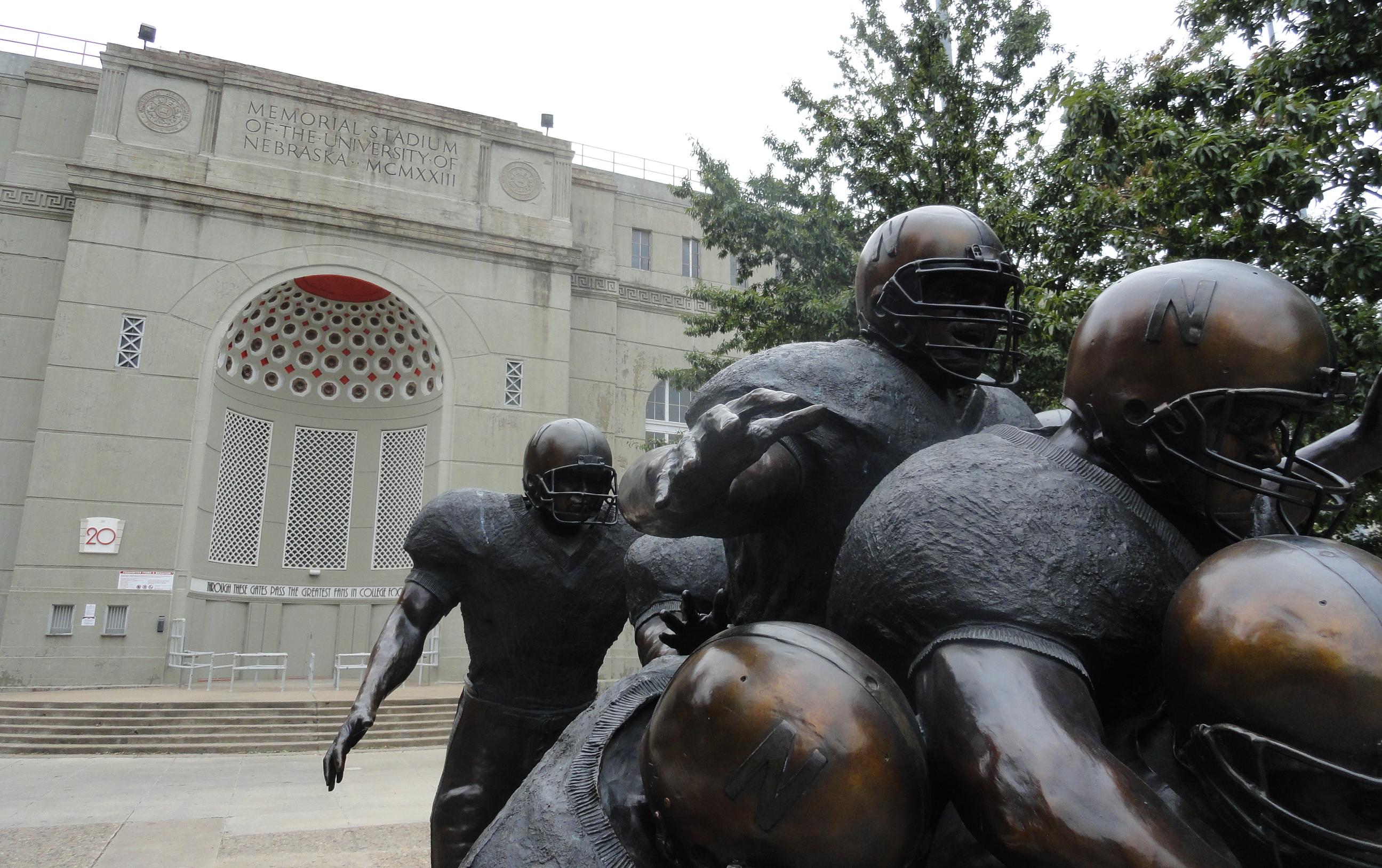
Memorial Stadium isn’t just a stadium—it’s a sacred site for Nebraska fans, and on game day, it transforms Lincoln into the third-largest city in the state. With a seating capacity of over 85,000 and a sellout streak dating back to 1962, it holds the kind of devoted energy that most professional venues envy. Nicknamed the “Sea of Red,” the stands erupt in a tidal wave of scarlet on game day, creating a visually and emotionally overwhelming environment. Recent upgrades include expanded concourses, enhanced concessions, and a state-of-the-art sound system that keeps the Cornhusker roar booming from every corner. Massive video boards bring fans closer to the action, while improved accessibility and new premium options elevate the overall experience. Yet even with these enhancements, the heart of Memorial Stadium remains unchanged: a place where passion, pride, and community converge in a way that feels every bit as epic as Sunday football.
9. Ben Hill Griffin Stadium (University of Florida) – Gainesville, Florida
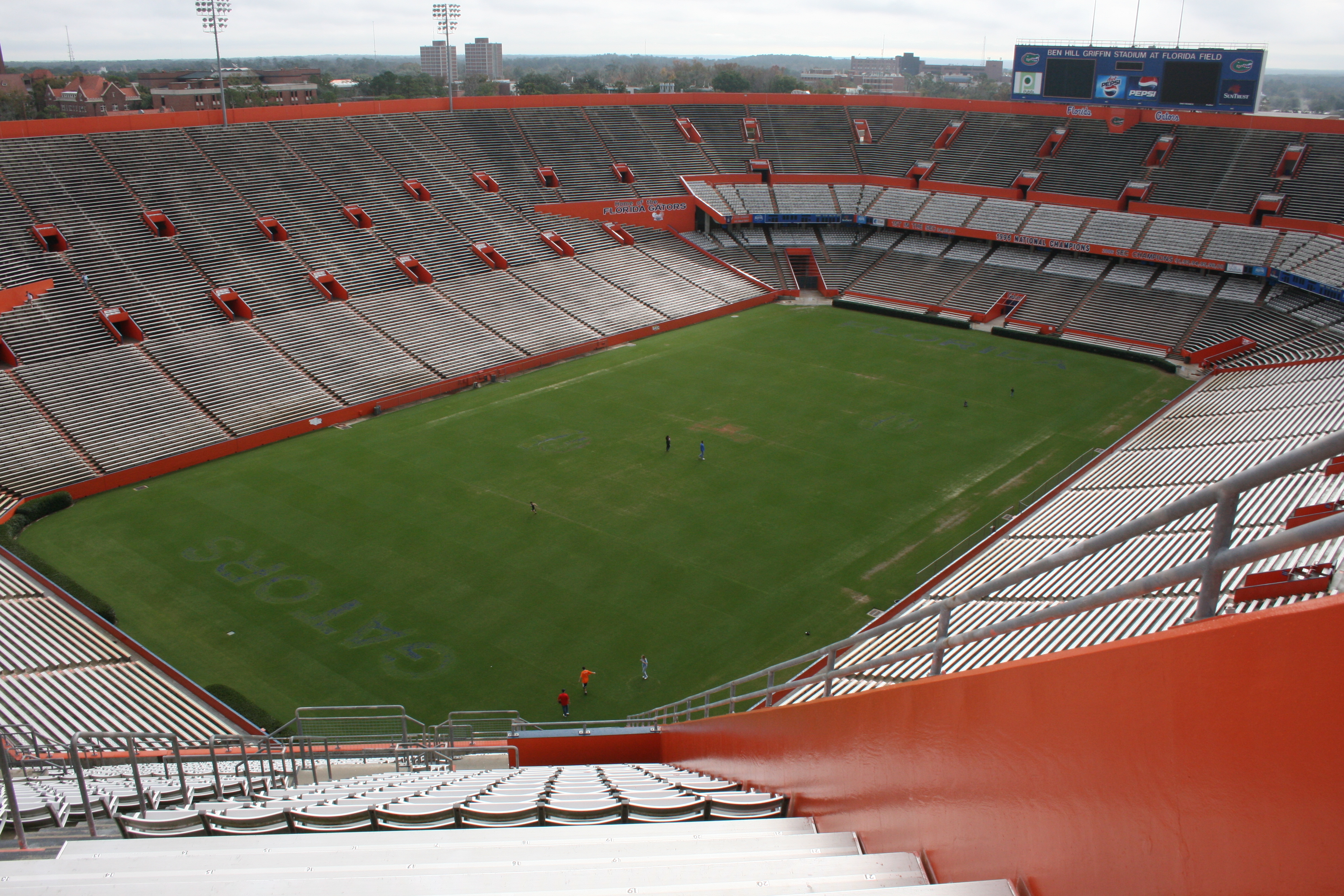
There’s hot—and then there’s “The Swamp.” Ben Hill Griffin Stadium, home of the Florida Gators, is infamous for its blistering Florida heat and equally ferocious fans. With a capacity of around 88,000, this stadium is a pressure cooker in the best way possible, giving opponents a uniquely hostile welcome. It’s loud, it’s intense, and it’s absolutely unforgettable. But don’t let the gritty atmosphere fool you—Florida has invested heavily in keeping “The Swamp” modern and comfortable. Recent enhancements include improved concessions, expanded restrooms, better cooling zones, and upgraded video and sound systems that rival those found in professional arenas. Despite the heat, fans stay engaged with mobile ticketing, real-time replays, and interactive features throughout the stadium. It's a venue that has hosted countless iconic SEC clashes and continues to be one of the most feared and revered home-field advantages in all of college sports.
10. Sanford Stadium (University of Georgia) – Athens, Georgia
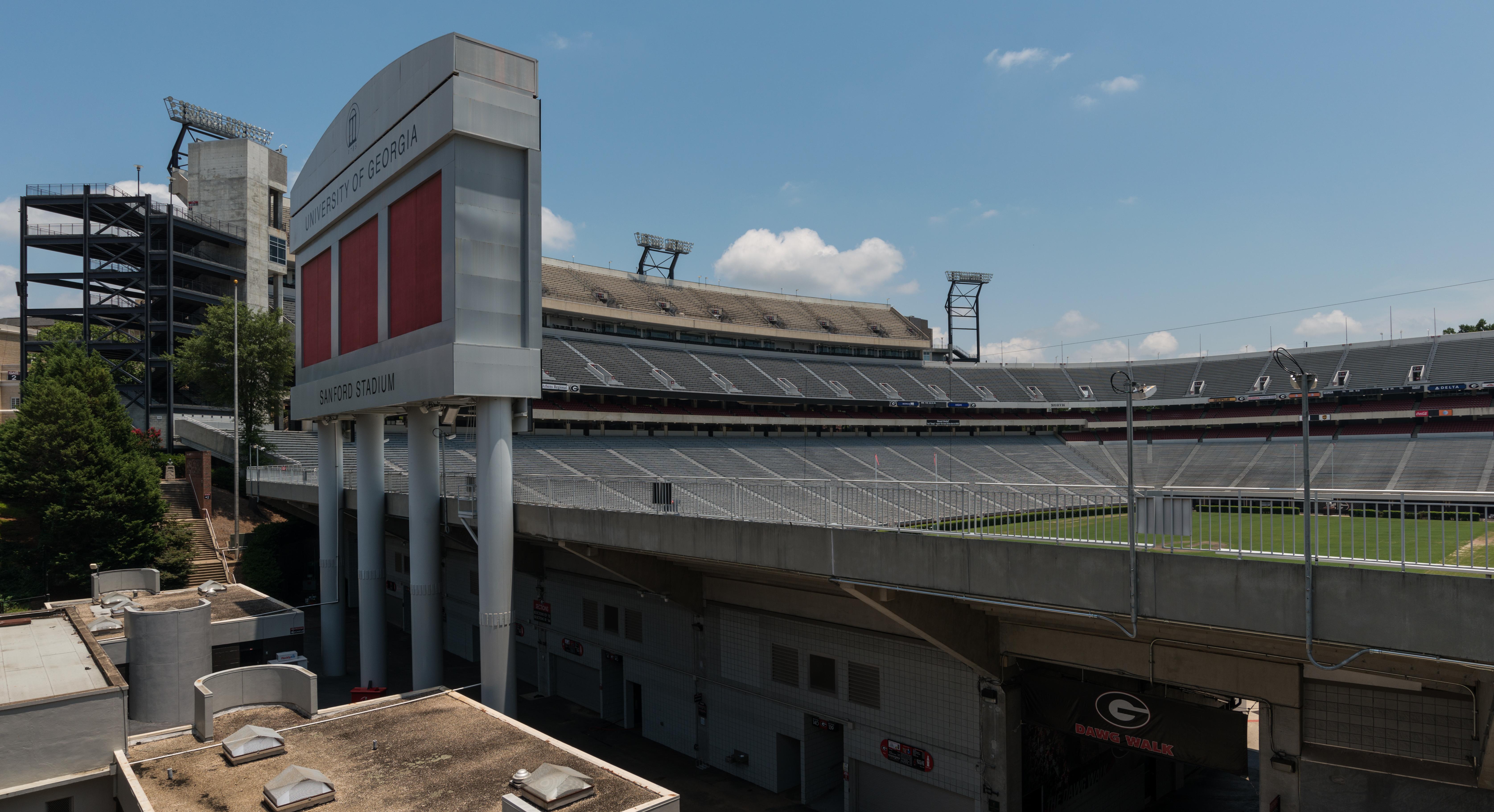
Between the hedges lies one of the crown jewels of southern football: Sanford Stadium. With its stately design, massive capacity of over 92,000, and deep-rooted traditions, it’s a shrine to the Bulldog Nation and a bucket-list destination for college football fans. But it’s not all Southern charm and history—recent renovations have brought Sanford fully into the modern era. The stadium now features a massive LED video board, premium seating areas with panoramic views, expanded concourses, and an upgraded sound system that shakes the foundations during big plays. The scenic setting, nestled against the backdrop of UGA’s historic campus, adds an unmatched aesthetic to game day. And when the Redcoat Band strikes up “Glory, Glory,” the place turns electric. With its mix of classic college tradition and modern spectacle, Sanford Stadium doesn’t just keep up with pro venues—it stands shoulder to shoulder with the very best.
11. Darrell K Royal-Texas Memorial Stadium (University of Texas) – Austin, Texas
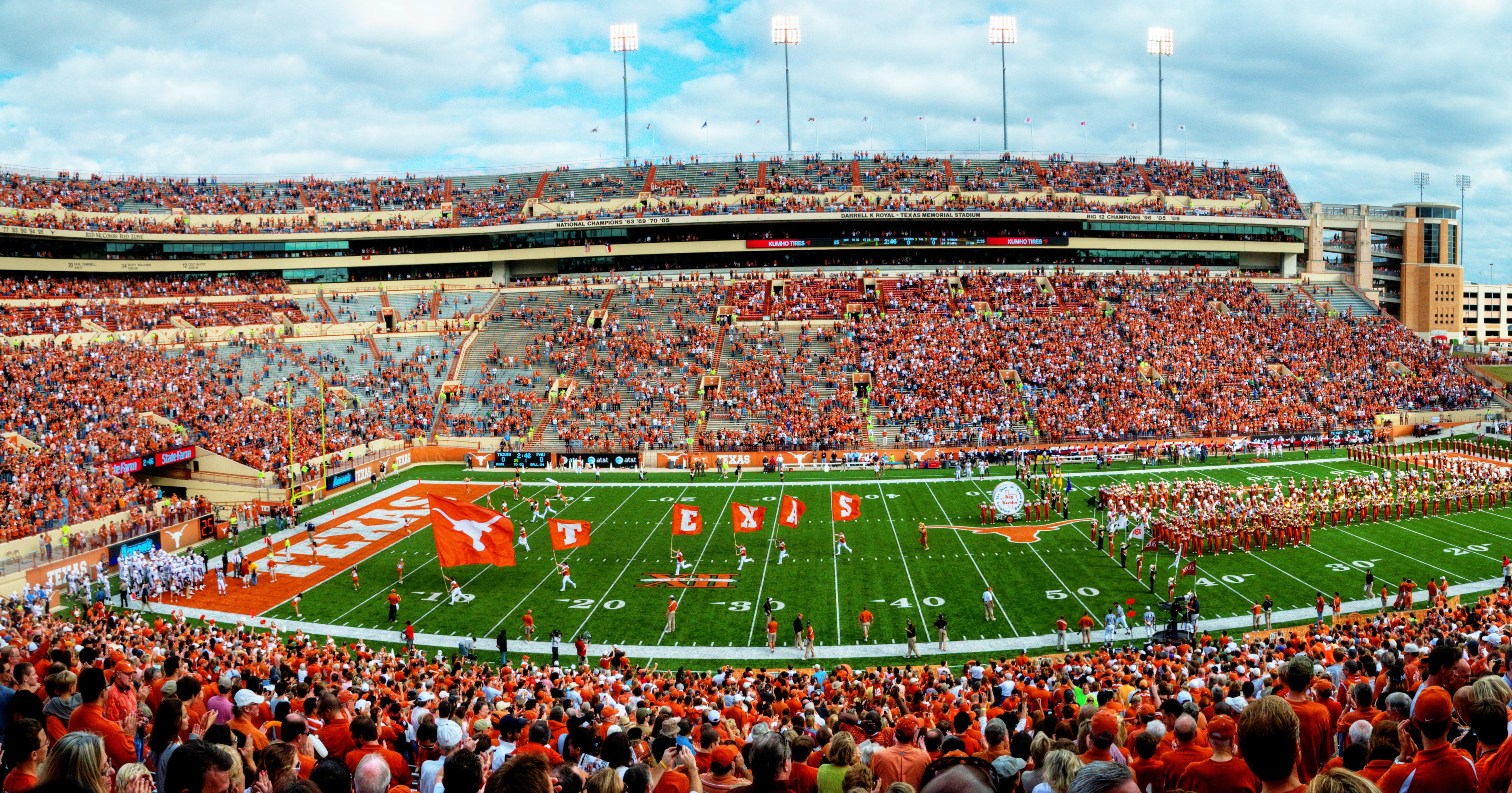
Everything’s bigger in Texas, and Darrell K Royal–Texas Memorial Stadium is no exception. Home to the Longhorns, this stadium seats over 100,000 fans and is constantly evolving to match the university’s championship aspirations. Recent renovations have taken it to new heights—literally—with a towering new end zone complete with club lounges, luxury suites, and one of the largest video boards in college sports. Beneath the iconic burnt orange arches lies a fan experience tailored for the 21st century: seamless mobile integration, 5G connectivity, and interactive features that enhance every moment of game day. The stadium is also a tech marvel behind the scenes, with smart infrastructure, energy efficiency measures, and dynamic crowd flow management. But beyond the bells and whistles, the atmosphere remains pure Texas—boisterous, bold, and brimming with pride. When the Longhorns run out to the sound of “Texas Fight,” this stadium feels every bit like a pro-level powerhouse.
12. Camp Randall Stadium (University of Wisconsin) – Madison, Wisconsin
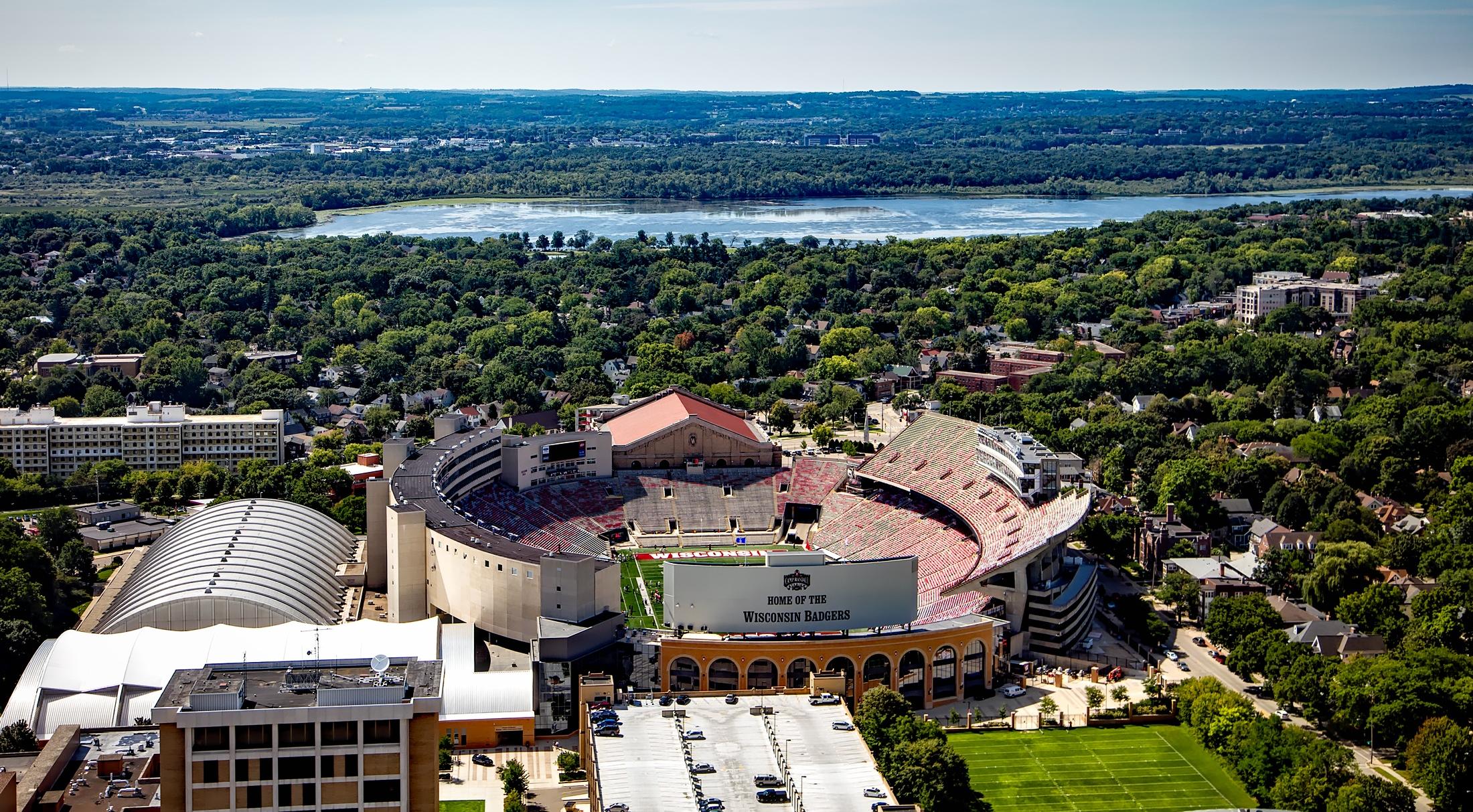
Home to the Wisconsin Badgers, Camp Randall is where tradition and raw energy collide. With a capacity of over 80,000, it’s known for its raucous crowds, historic vibe, and one of the most iconic game-day rituals in sports: the “Jump Around.” When House of Pain blasts between the third and fourth quarters, the entire stadium literally bounces with fans in red and white. Beyond tradition, recent upgrades have brought modern amenities like expanded premium seating, updated video boards, and improved concourses. Tucked into the heart of Madison, the stadium pulses with community spirit and game-day electricity.
13. Ross-Ade Stadium (Purdue University) – West Lafayette, Indiana
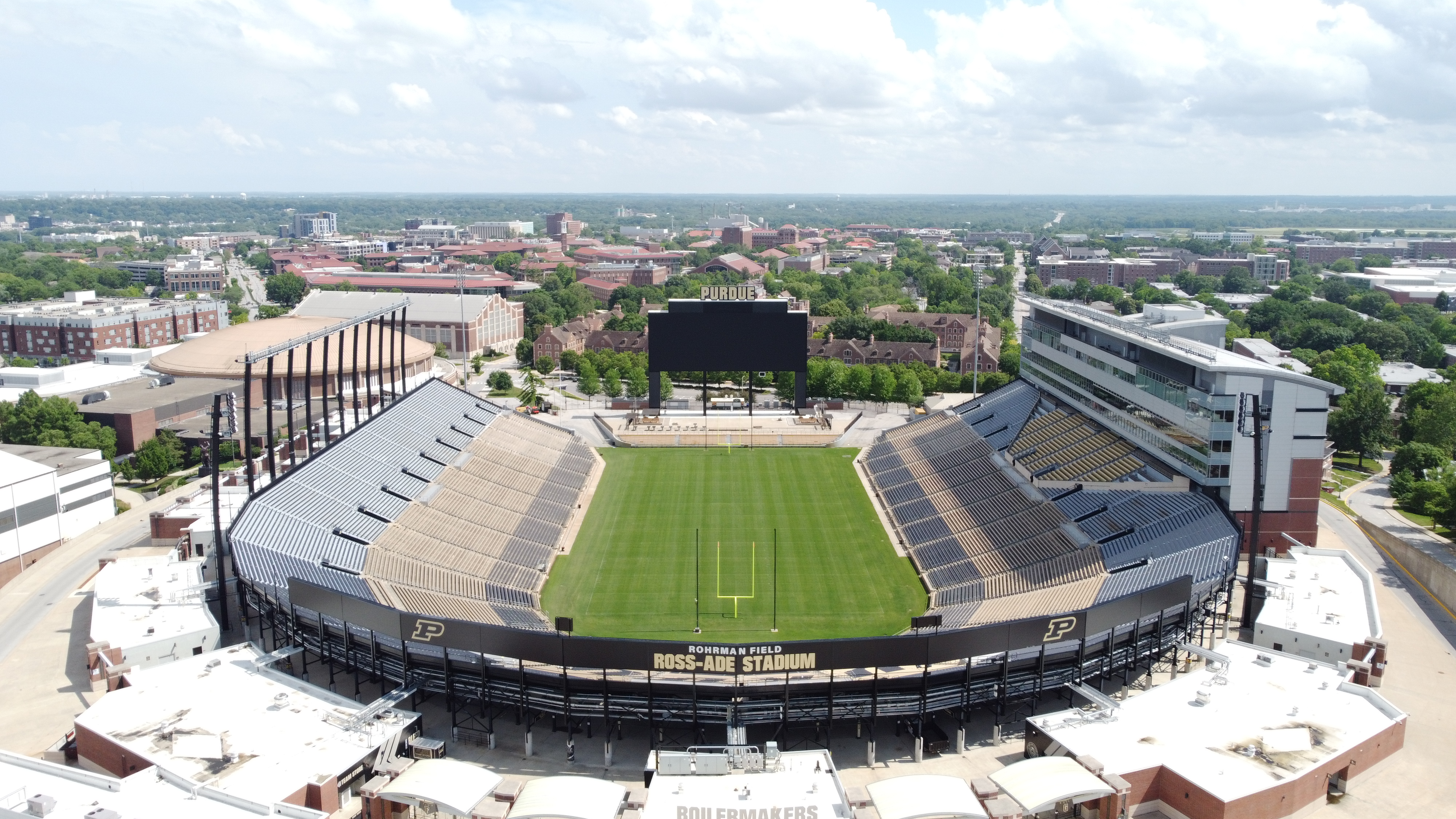
Purdue’s Ross-Ade Stadium may fly under the radar, but recent renovations have catapulted it into the national conversation. A massive modernization project is transforming the venue with new south end zone seating, VIP clubs, and upgraded video boards—all while preserving the intimacy that makes it special. Fans get close to the action, and the game-day atmosphere is fueled by a loyal, tech-savvy student section and the iconic "Boilermaker Special" train. With ambitions that match its engineering roots, Ross-Ade is rising fast among the nation’s best college venues.
14. Lane Stadium (Virginia Tech) – Blacksburg, Virginia
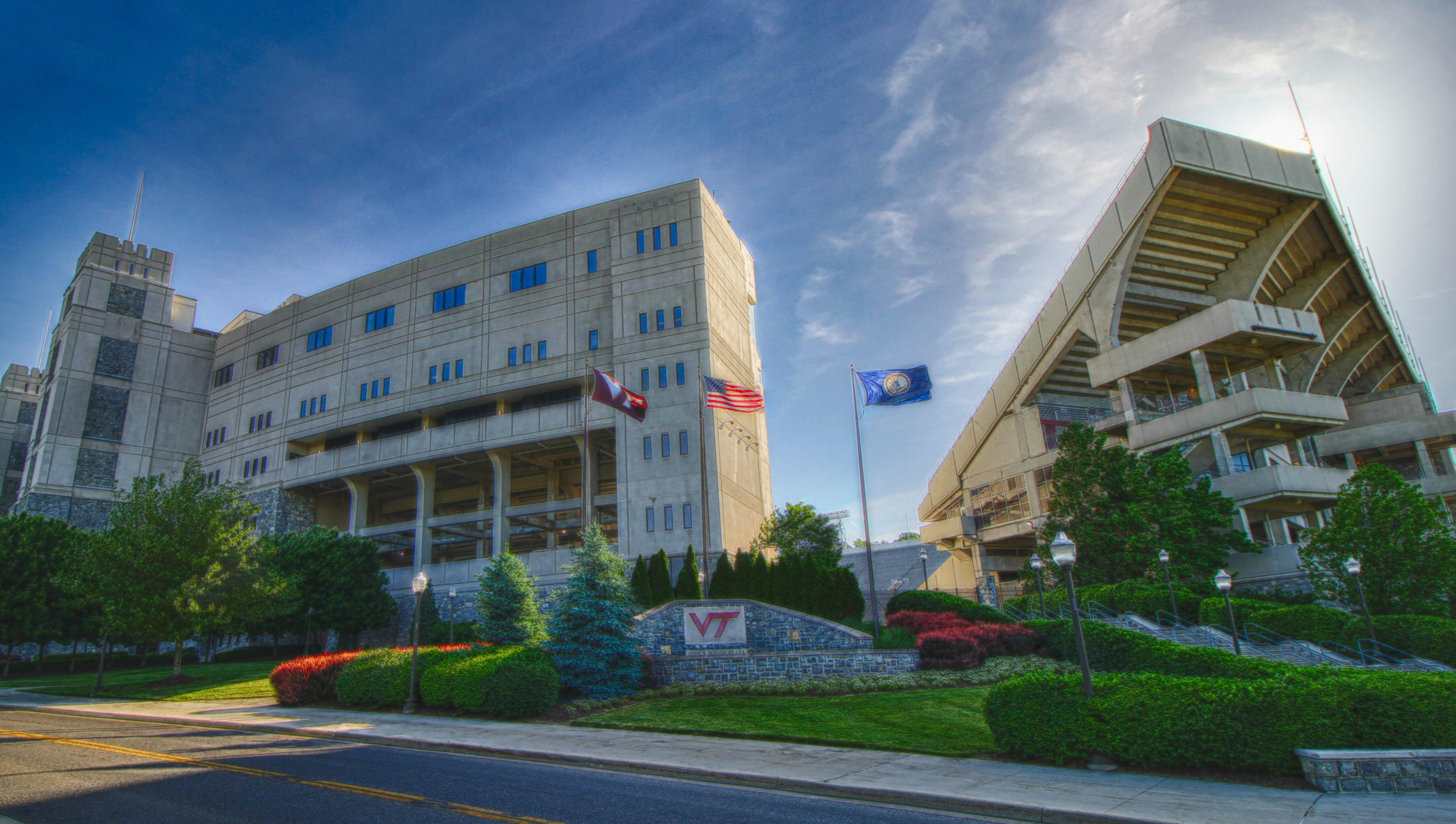
Nestled in the Blue Ridge Mountains, Lane Stadium is known for one thing above all else: the wildest entrance in college football. When Metallica’s “Enter Sandman” drops, the Hokie faithful erupt, and the ground practically shakes. With a capacity just over 65,000, it’s not the largest—but it’s one of the loudest. A recent wave of enhancements includes high-definition video boards, LED lighting, and upgraded sound systems, amplifying the electric pregame ritual. Lane Stadium is proof that atmosphere can outshine size—and few places bring the heat like Blacksburg on a Saturday night.
15. Boone Pickens Stadium (Oklahoma State University) – Stillwater, Oklahoma
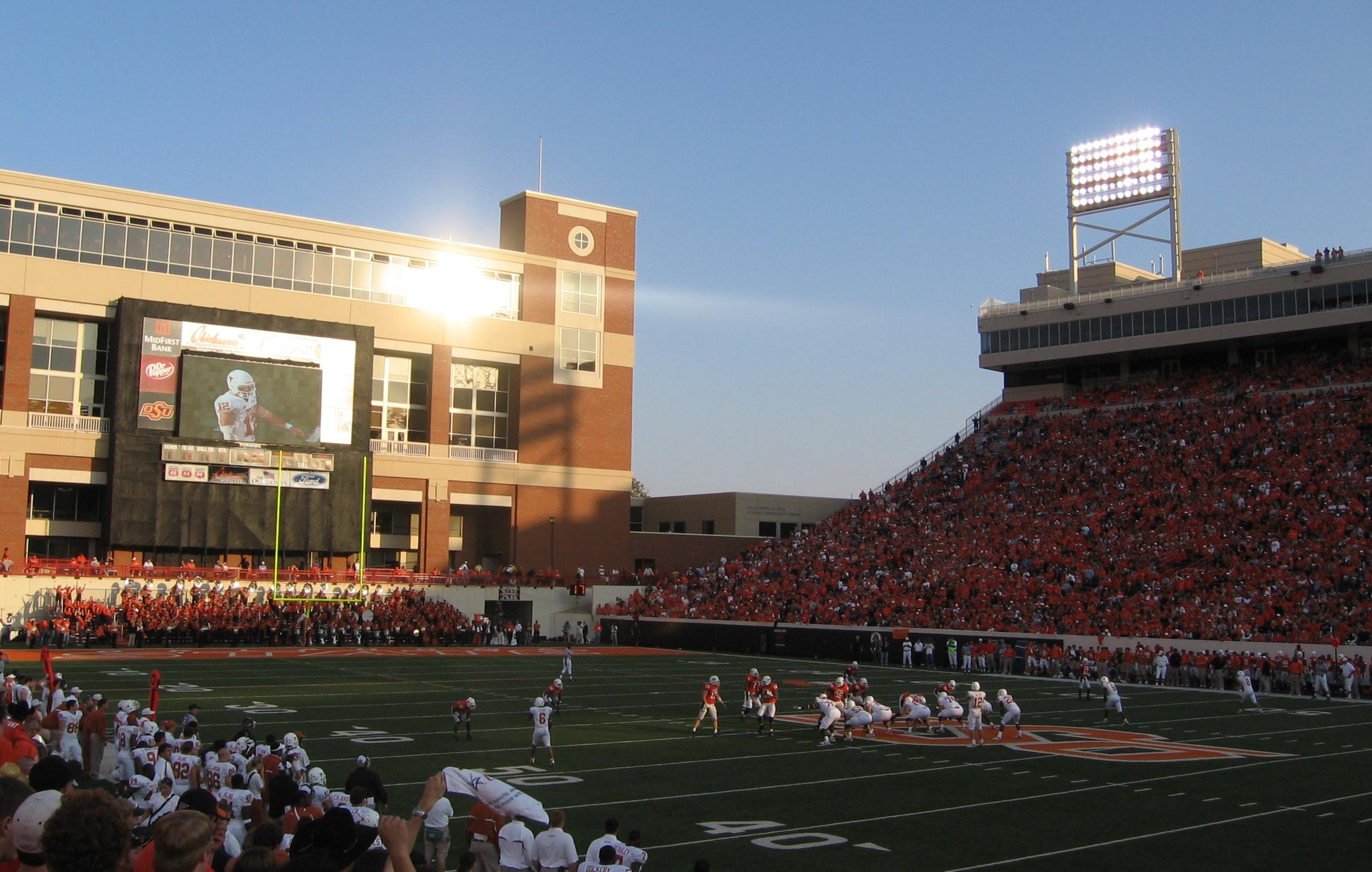
Named after billionaire alum T. Boone Pickens, this stadium is a sleek, modern marvel in the heart of Stillwater. With a recent $300 million makeover, Boone Pickens Stadium boasts brick-and-glass architecture, luxury suites, and a smart design that brings fans close to the action. The west end zone complex includes top-tier training and recovery facilities, making it as much a recruiting tool as a football venue. The fan experience is top-notch, from interactive displays to dynamic lighting and booming sound. On game day, this place feels more NFL than NCAA—and that’s exactly the point.
16. Sun Devil Stadium (Arizona State University) – Tempe, Arizona
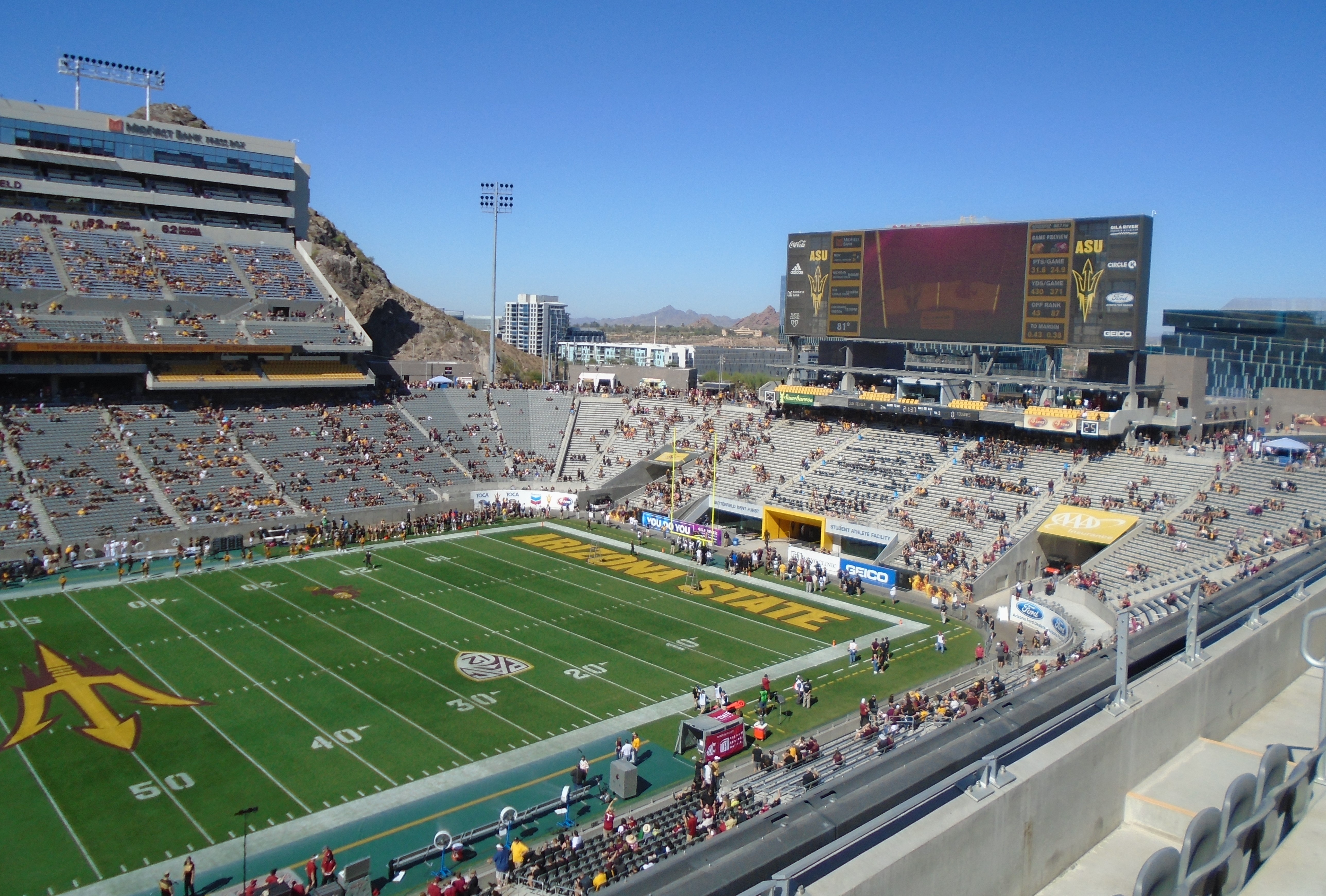
Set against the rocky backdrop of “A” Mountain, Sun Devil Stadium blends desert drama with cutting-edge design. A major renovation has transformed this mid-century structure into a sleek, modern sports complex. The open-air layout now features new fan zones, shaded seating, premium lounges, and upgraded concourses. At night, the desert skyline glows as fans take in the action under the stars. Bonus: the stadium hosts everything from NFL preseason games to concerts and soccer matches—making it a true multi-use powerhouse.
17. Faurot Field at Memorial Stadium (University of Missouri) – Columbia, Missouri
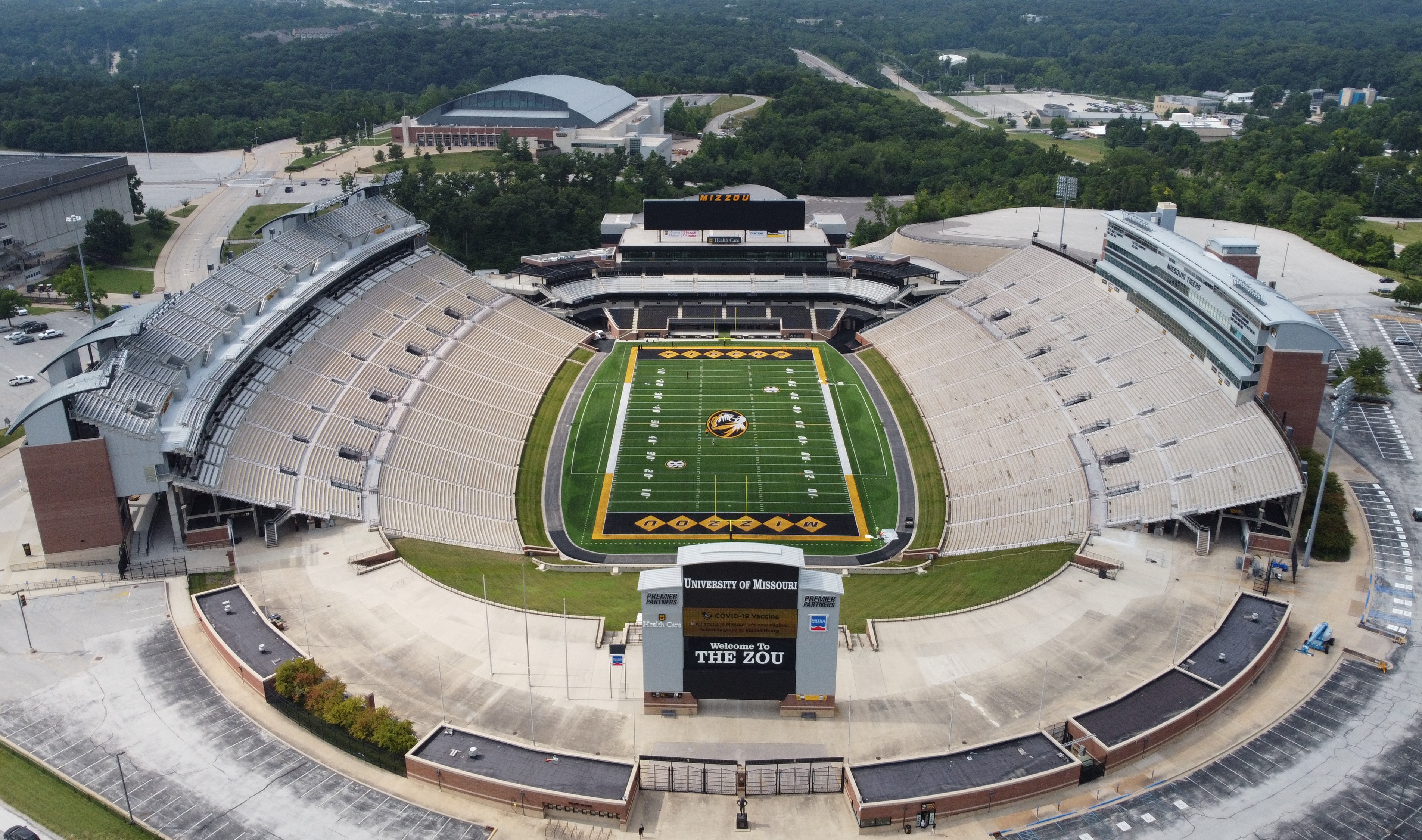
Faurot Field brings heartland hospitality and SEC swagger to the table. Nestled into a natural bowl, the stadium offers sweeping sightlines and a loud, close-to-the-action feel. With recent updates including premium seating, improved concessions, and high-tech video boards, Mizzou’s home is now every bit the equal of its bigger-conference counterparts. The stadium’s iconic “M” hill—carved from rocks by students nearly a century ago—adds a unique backdrop and deep sense of tradition. On Saturdays, Columbia transforms into a sea of black and gold where pro-caliber facilities meet hometown charm.
18. Rice-Eccles Stadium (University of Utah) – Salt Lake City, Utah
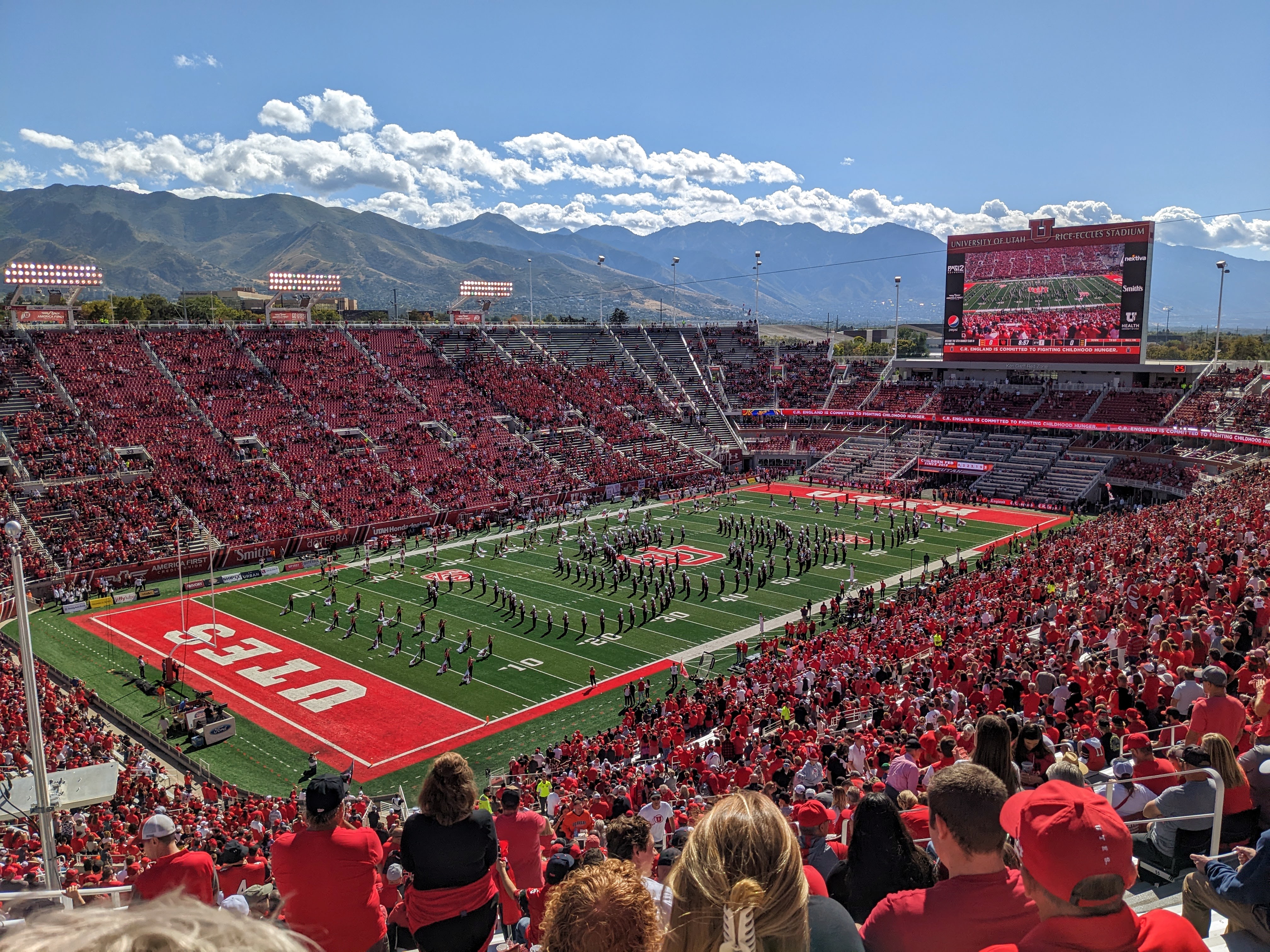
Host of the 2002 Winter Olympics opening and closing ceremonies, Rice-Eccles Stadium brings global pedigree to the Pac-12. A recent $80 million expansion added a premium south end zone, complete with luxury suites, LED boards, and a new field-level club. Its high elevation gives it a literal and figurative edge—visiting teams often struggle in the thin air while fans bring the thunder from start to finish. The mountain backdrop, clean lines, and energized crowds make Rice-Eccles a future-forward stadium with serious altitude and attitude.
19. Albertsons Stadium (Boise State University) – Boise, Idaho
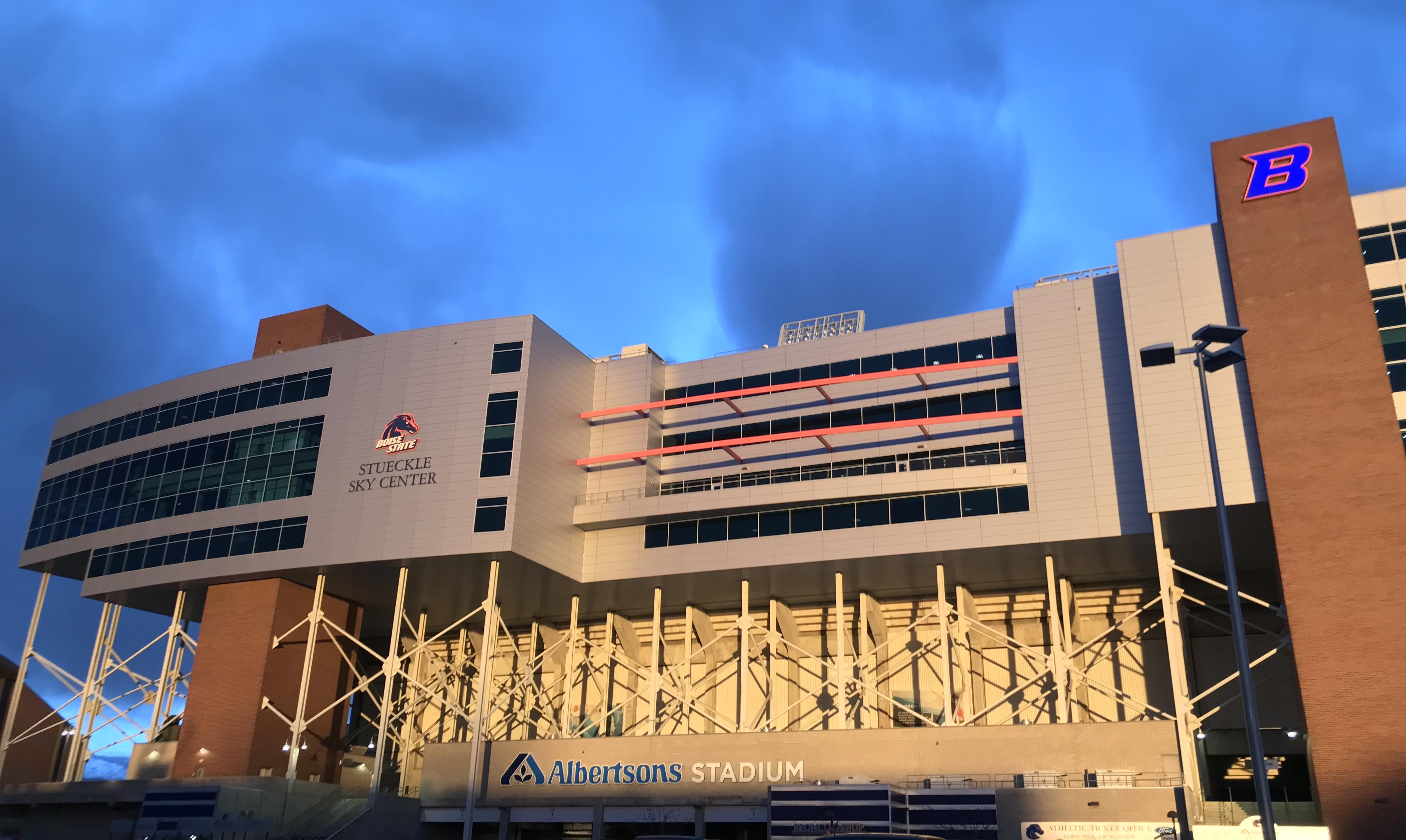
It’s impossible to ignore Boise State’s Albertsons Stadium—because it’s blue. Known nationwide for its iconic “Smurf Turf,” this venue breaks the mold in every way. The stadium seats just under 37,000 but punches above its weight with an electric atmosphere, creative fan traditions, and a fiercely loyal community. Recent upgrades have brought modern lighting, sound, and field-level VIP seating. It may not be the biggest, but Albertsons Stadium is one of the most visually distinctive and brand-savvy venues in college football.
20. Snapdragon Stadium (San Diego State University) – San Diego, California
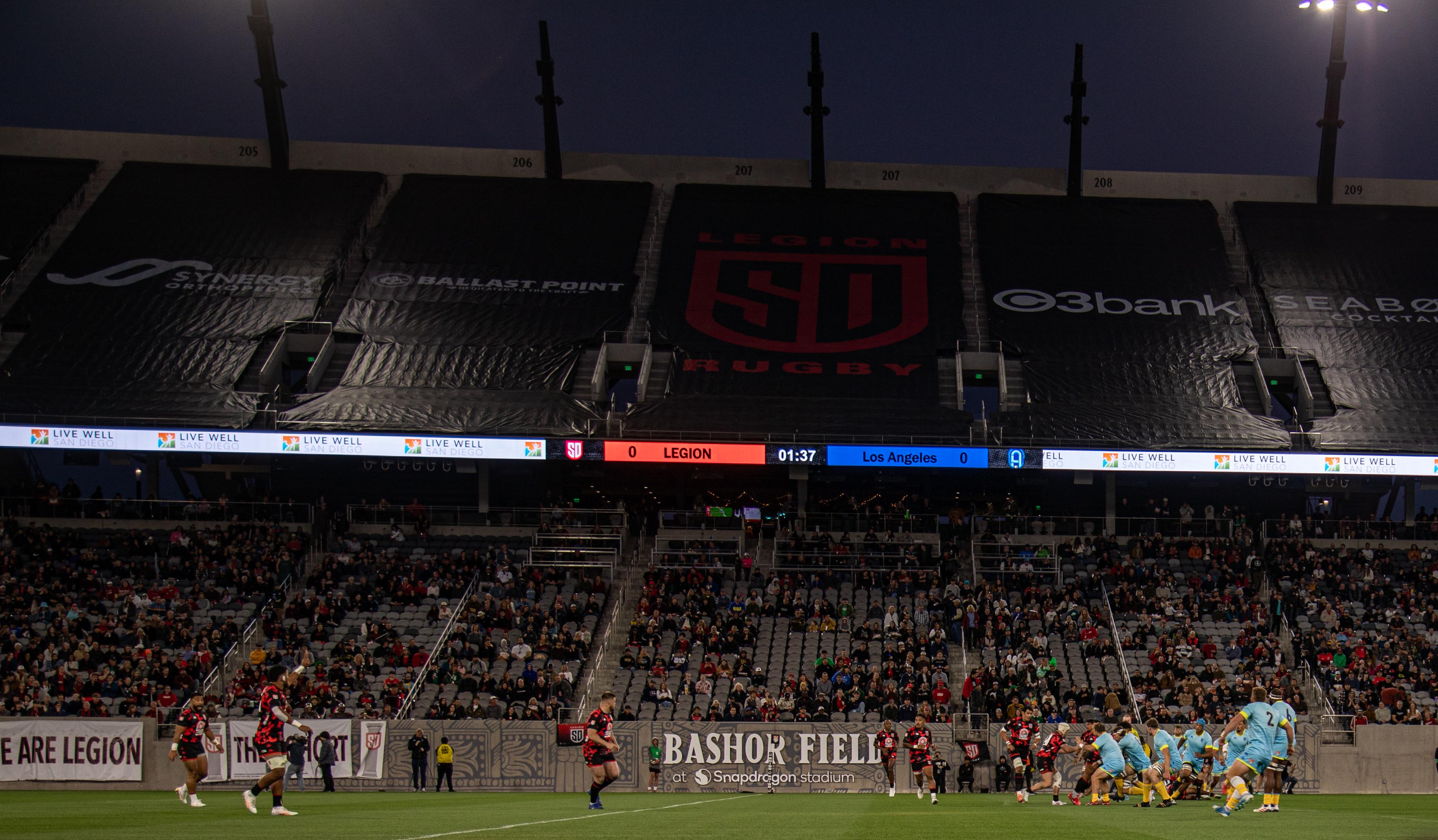
A newcomer with pro-level polish, Snapdragon Stadium opened in 2022 and set a new bar for mid-sized collegiate venues. With a sleek, climate-conscious design, it includes shaded seating, solar power infrastructure, and incredible sightlines throughout. It’s also tech-forward, offering app-based fan experiences, cashless concessions, and 5G connectivity. Designed for multi-use, Snapdragon hosts football, concerts, and professional soccer—giving it year-round value. With modern vibes and SoCal flair, it’s a shining example of the future of college stadiums.
21. Kinnick Stadium (University of Iowa) – Iowa City, Iowa
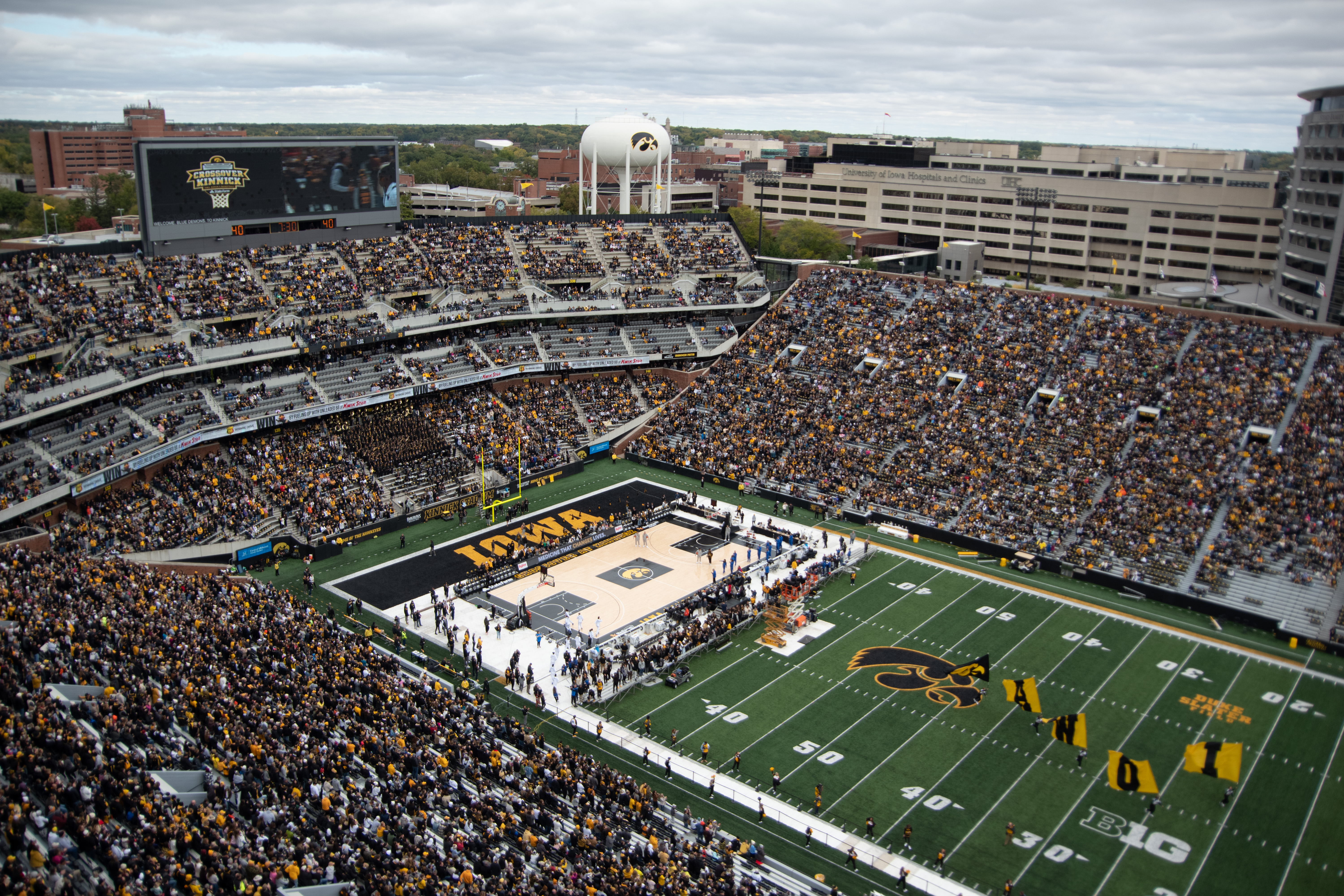
What Kinnick Stadium may lack in flash, it more than makes up for in heart—and one unforgettable tradition. Home to the Iowa Hawkeyes, the stadium’s most iconic moment comes at the end of the first quarter, when the entire crowd turns to wave at the children watching from the adjacent children’s hospital. It’s one of the most emotional and unifying moments in sports. Beyond the tradition, Kinnick has invested heavily in fan experience, adding club seating, upgraded concourses, and improved audio-visual systems. With a capacity of over 70,000, it’s a loud, proud, and deeply meaningful place to watch a game.
The College Stadium Revolution
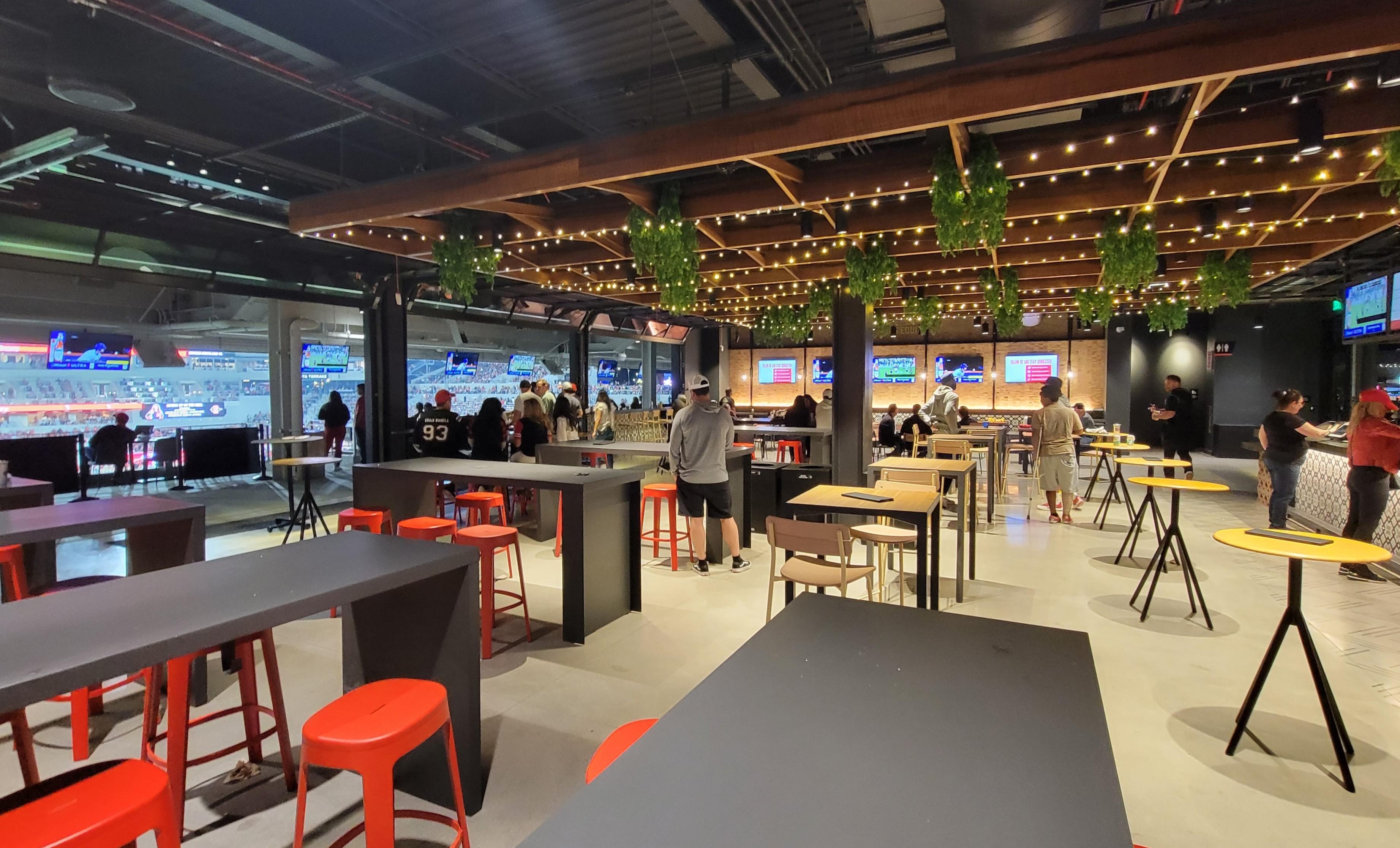
From towering coliseums in the Midwest to high-tech arenas in the South, these 21 college stadiums prove that the line between collegiate and professional sports architecture is all but erased. They're more than just football fields—they're sensory playgrounds, cultural icons, and recruitment magnets that energize entire communities. Each one blends the best of tradition and technology, offering fans an unforgettable experience that holds its own against any NFL Sunday. Whether you're standing in a roaring student section, enjoying panoramic views from a luxury suite, or witnessing the legacy of decades-long rivalries unfold, these stadiums make one thing clear: college football isn’t just keeping pace—it’s leading the way. In a world where sports are as much about spectacle as they are about the score, these stunning venues remind us why Saturdays are sacred and why the future of stadium design just might be wearing a letterman jacket.








